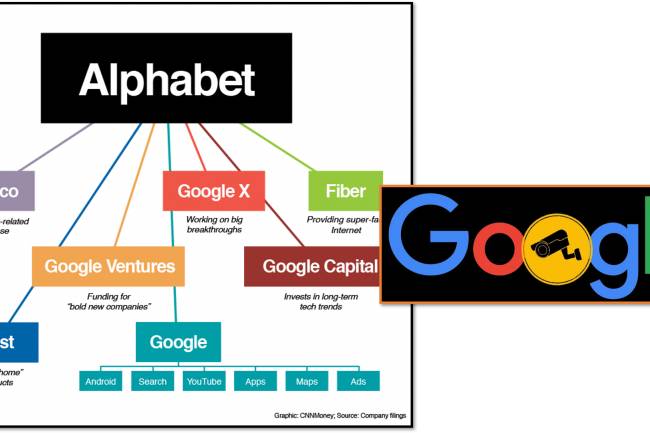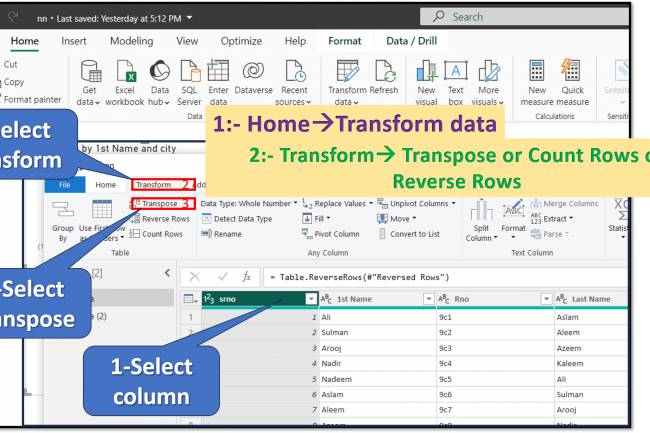
Regular Content Updates for Your Blog
Regular Content Updates for Your Blog
Categorically! Here's a thorough guide to "regular content updates": a key content strategy for blogs in 2025 that impacts SEO, reputation, and audience engagement.
Table of Contents
Regular Content Updates for Your Blog. 1
What are regular content updates?. 3
Why are regular content updates important? (2025) 3
1. Better Search Engine Optimization (SEO) 3
3. Maintaining reputation and authority. 3
4. Increase internal linking opportunities. 3
6. Supports content marketing strategies. 4
7. Helps maintain evergreen content rankings. 4
What is considered a "content update"?. 4
Steps to Update Appropriate Content 4
Step 1: Audit existing posts. 4
Step 2: Update data and sources. 4
Step 4: Re-optimize for Search. 5
Step 5: Republish (optional) 5
When and how often to update content. 5
How often to update content. 5
Practice why it's important. 6
Benefits of Regular SEO Updates. 6
1. Better search engine rankings. 7
2. Increase organic traffic. 7
3. Better user experience (UX) 7
4. Stay ahead of algorithm changes. 7
5. High engagement and conversions. 7
6. Strong competitive advantage. 7
7. Maintains content authority. 7
8. Support featured snippets and voice search. 7
Best Tools to Use for Content Update. 8
1. Google Search Console (Free) 8
2. Google Analytics 4 (GA4) (Free) 8
4. Surfer SEO / Clear scope (Paid) 8
5. ContentKing / Sitebulb / ScreamingFrog (Free / Paid) 8
6. Notion / Trello / Airtable (Free/Paid) 8
7. Grammarly / Hemingway Editor (Free/Paid) 9
9. RankMath or Yoast SEO (WordPress) (Free/Paid) 9
Step-by-Step Content Update Overview.. 9
Step-by-Step Guide to Content Updates. 10
2. Define the objectives of the update. 10
Explain why the content needs to be updated: 10
3. Research and gather new information. 10
4. Edit or rewrite the content. 10
5. Optimize for SEO (if applicable) 10
6. Update visuals and multimedia. 10
7. Review and Quality Control 10
8. Publish or reupload content. 11
What are regular content updates?
Regular content updates include regularly reviewing, editing, and improving existing blog posts or pages to ensure:
- Accuracy
- Compatibility
- Refresh ability
- SEO proficiency
- This includes:
- Updating old facts and figures
- Adding new sections or information
- Updating visual elements or formatting
- Reoptimizing keywords or metadata
Both Google and users reward freshness. Outdated content can drop in rankings or lose trust.
Why are regular content updates important? (2025)
Regular content updates are important in 2025 for several important reasons, especially in the context of SEO, user engagement, and credibility. Here's why they're important:
1. Better Search Engine Optimization (SEO)
- Google prefers fresh content: Search engines like Google like regularly updated websites because it indicates a site's activity and relevance.
- Increased crawl rate: Search engines can crawl your site more frequently if they detect frequent updates, improving indexing speed for new content.
2. Better user engagement
- Returning visitors: Fresh content gives users a reason to return, which helps build a loyal audience.
- Fresh information: Consumers trust sites that provide the latest data, news, trends, or product information.
3. Maintaining reputation and authority
- Outdated content can damage reputation, especially in rapidly changing industries like technology, finance, or healthcare.
- Regular updates ensure your information remains accurate, improving trust.
4. Increase internal linking opportunities
- Fresh content allows for more internal links, which improves SEO and helps users discover relevant content.
5. Competitive advantage
- Staying up-to-date will help you compete effectively by reflecting current industry trends and meeting the needs of emerging audiences before competitors do.
6. Supports content marketing strategies.
- Continuous updates provide content for newsletters, social media, and campaigns, keeping your content ecosystem active and aligned with your brand message.
7. Helps maintain evergreen content rankings.
- Even evergreen content benefits from occasional updates (updated statistics, reordering, improved readability), which can maintain or increase its search performance.
Bottom line: In the competitive digital environment of 2025, regular content updates are critical for visibility, trust, engagement, and long-term growth.
What is considered a "content update"?
- Is the action considered an update? The SEO impact
- Fixing typos or grammar errors, Minor updates
- Rewriting or adding new sections, Major update High
- Updating statistics or data, Moderate update Medium
- Updating photos or videos, Medium
- Reoptimizing with new keywords, Major High
- Changing the publish date without any changes, (simply not correct) None.
Changing the publish date without editing the content no longer fools Google; It can hurt rankings if overused.
Steps to Update Appropriate Content
Step 1: Audit existing posts.
Use tools such as:
- Google Search Console → View declining pages
- Ahrefs/Semrush → Detect declining traffic and missing content.
- Screaming Frog → Identify outdated or underperforming posts.
Step 2: Update data and sources.
- Replace old statistics with new ones (from the current year)
- Check and fix broken links.
Step 3: Add new value.
- Add FAQs, expert quotes, or video summaries.
- Embed updated tools or widgets.
- Expand sections to improve topical authority.
Step 4: Re-optimize for Search
- Identify new keywords or better variations
- Update H1s, H2s, and meta title/descriptions.
- Improve internal linking structure
Step 5: Republish (optional)
- Republish only if major changes have been made.
- Explicitly update the "last updated" date.
- Add a "What's New" section if necessary.
When and how often to update content.
The frequency of content updates depends on the type of content, industry trends, and your overall strategy. Here's a breakdown to help guide your approach:
When to update content.
1. When rankings drop.
- Use tools like Google Search Console or SEMrush to identify content that is losing rankings or traffic.
- Updating content can help regain visibility.
2. When information becomes outdated.
- Search for:
- Expiration dates (e.g., "Top 10 Tools of 2023")
- Broken links or discontinued products
- Changes in statistics, laws, or best practices
3. When industry trends change.
In rapidly evolving industries (e.g., technology, finance, healthcare), update content when:
- New standards emerge.
- Competitors publish better or new information.
4. Before the Key Marketing Cycle
- Update relevant content before holidays, events, product launches, or seasonal campaigns.
5. Based on performance reviews of your content
- Audit your content periodically (every 6 to 12 months) and update underperforming pieces.
How often to update content.
High-impact pages (e.g., pillar posts, top-traffic pages)
- Every 3-6 months
- Keep them sharp and competitive with regular tweaks.
Evergreen Content
- Annually, or sooner if facts or tools change.
- Small updates, such as adding new examples, rewording text, or updating statistics, may be sufficient.
News and Trending Content
- In real time or within days if updates are needed.
- Consider republishing older posts or marking them as archived.
Product/Service Information Pages
- Quarterly or as needed to reflect changes in offerings, pricing, or availability.
Company Blog or Insights
- Weekly or monthly, depending on your strategy and resources.
Best Ways to Apprise
- Update titles/meta descriptions to reflect the latest focus or keywords.
- Add new internal/external links to related resources.
- Add new visuals, graphics, or videos to improve the user experience.
- Repromoted updated content through newsletters and social media.
In rapid:
Update high-value and time-sensitive content more frequently (3–6 months) and audit the rest at least annually. Use data and user needs to guide timing. Prioritize quality updates that improve clarity, accuracy, and relevance.
Professional tip: Set up a content update calendar using Notion, Trello, or Air table to keep track of this.
Best ways to update content
Practice why it's important.
- Track all changes. Useful for auditing and reporting progress.
- Keep the original URL to avoid breaking backlinks or hurting SEO.
- Adding update notes (if they're extensive) builds transparency and trust with readers.
- Use 301 redirects for merged content to keep old traffic flowing to stable pages.
- Re-optimize page speed and user experience. New media or content can impact performance.
Benefits of Regular SEO Updates
Outcome of Benefit
It's important to regularly update your SEO to maintain and improve online visibility in the ever-evolving digital landscape. These are the main benefits:
1. Better search engine rankings
- Search engines like Google look for new and relevant content.
- Updating existing content helps regain or increase keyword rankings.
- Adding new keywords or search intent helps align with how users currently search.
2. Increase organic traffic
- New content gets more clicks by appearing more relevant and up-to-date in search results.
- Updating meta titles and descriptions can improve click-through rates (CTR).
3. Better user experience (UX)
- Users are more likely to stay on your site when content is current, accurate, and useful.
- Updating broken links, outdated data, and formatting improves readability and trust.
4. Stay ahead of algorithm changes
- SEO algorithms are updated frequently (e.g., Google Core Updates).
- Regular updates allow you to adapt to changes in ranking factors, such as page speed, mobile-friendliness, or content quality.
5. High engagement and conversions.
- Updated pages can better align with user intent, leading to more actions (signups, purchases, etc.).
- Adding new calls to action (CTAs), product information, or testimonials increases relevance and trust.
6. Strong competitive advantage
- Regular updates help you stay ahead of your competitors, who may not be up to date with their content.
- You can exploit gaps in your content or target emerging trends first.
7. Maintains content authority.
- Search engines and users consider regularly updated sites to have greater authority.
- Citing the latest statistics and recent studies and linking to credible sources increases credibility.
8. Support featured snippets and voice search.
- Updating your content with concise, well-structured answers increases your chances of appearing in featured snippets or being included in voice search results.
“Regular SEO updates help protect and increase your organic visibility, support a better user experience, and keep you aligned with search engine best practices,all of which are crucial for long-term online success.”
Best Tools to Use for Content Update
Tool Feature
Keeping your content up-to-date requires both knowledge and efficiency. Here are the best tools (free and paid) to help you effectively analyze, update, and improve your content:
1. Google Search Console (Free)
- Use it to:
- Identify pages with declining traffic or impressions
- Search query analysis to update keywords
- Find indexing issues
Authority tip: Use the "Performance" tab to find content with declining clicks or impressions—these are prime candidates for updates.
2. Google Analytics 4 (GA4) (Free)
- Use it to:
- Track user engagement and bounce rates on content
- How to find underperforming or high-performing pages
- Understand the content that drives conversions
3. SEMrush / Ahrefs (Paid)
- Use them for:
- Keyword performance tracking
- Content gap analysis (see what competitors are doing)
- Backlink opportunities for updated content
- Finding outdated content based on missing keywords
4. Surfer SEO / Clear scope (Paid)
- Use them for:
- Real-time content optimization using NLP-based keyword suggestions
- Evaluating your content against top-tier competitors
- Providing semantic keyword and structure suggestions
5. ContentKing / Sitebulb / ScreamingFrog (Free / Paid)
- Use them for:
- Real-time site content monitoring for changes, errors, or broken links
- Crawling large sites to find old pages or SEO issues
- Ensuring updated pages comply with Technical SEO best practices.
6. Notion / Trello / Airtable (Free/Paid)
- Use them for:
- Managing content update workflows
- Creating editorial calendars for scheduled updates
- Assigning tasks to teams or freelancers
7. Grammarly / Hemingway Editor (Free/Paid)
- Use them for:
- Improving the readability and clarity of old content
- Fixing grammatical issues that affect user trust
- Ensure updated copy sounds modern and professional
8. Ubersuggest (Freemium)
- Use it for:
- Keyword suggestions and content ideas
- SEO content audit
- Tracking ranking improvements after updates
9. RankMath or Yoast SEO (WordPress) (Free/Paid)
- Use it for:
-
- On-page SEO recommendations when updating content
- Improving title tags, meta descriptions, and readability
- Managing internal links during updates
10. AI Tool ????
- Use it for:
- Rewriting and modernizing outdated paragraphs
- Creating new introductions, summaries, and CTAs
- Developing FAQ sections or new angles for existing topics
Final Assumed
- Regular content updates are a competitive advantage, not an afterthought.
- They turn your blog into a living resource, not a one-stop publishing platform.
- "In SEO, it's not just about publishing more: it's about maintaining what you already have."
Step-by-Step Content Update Rapid Overview
Below is a step-by-step overview of how to effectively manage content updates:
Step-by-Step Guide to Content Updates
1. Review Current Content.
- Read the current material carefully.
- Identify outdated information, errors, or irrelevant sections.
- Note anything missing or that could be improved.
2. Define the objectives of the update.
Explain why the content needs to be updated:
- SEO optimization?
- Adding new information?
- Correcting errors?
- Improving readability or formatting?
3. Research and gather new information.
- Gather accurate and up-to-date information from reliable sources.
- Double-check facts, data, or figures before including them.
4. Edit or rewrite the content.
- Replace old pieces with new materials.
- If necessary, reorganize the pieces for better flow.
- Keep the tone and style consistent with the original (unless it's part of an update).
5. Optimize for SEO (if applicable)
- Update keywords naturally throughout the text.
- Update the meta title and meta description.
- Add relevant internal and external links.
6. Update visuals and multimedia.
- Replace old photographs, graphics, or videos with current images.
- Ensure all media is properly attributed and accessible.
7. Review and Quality Control
- Check grammar, punctuation, and spelling.
- Make sure all links work.
- Read it aloud or use tools to ensure clarity and intonation.
8. Publish or reupload content.
- Save a backup copy of the previous version (if necessary).
- Publish updated content.
- Check the layout and design on both desktop and mobile.
9. Monitor performance.
- Use analytics tools to track performance (traffic, engagement, rankings).
- Continue refining based on the results.
Thanks



















